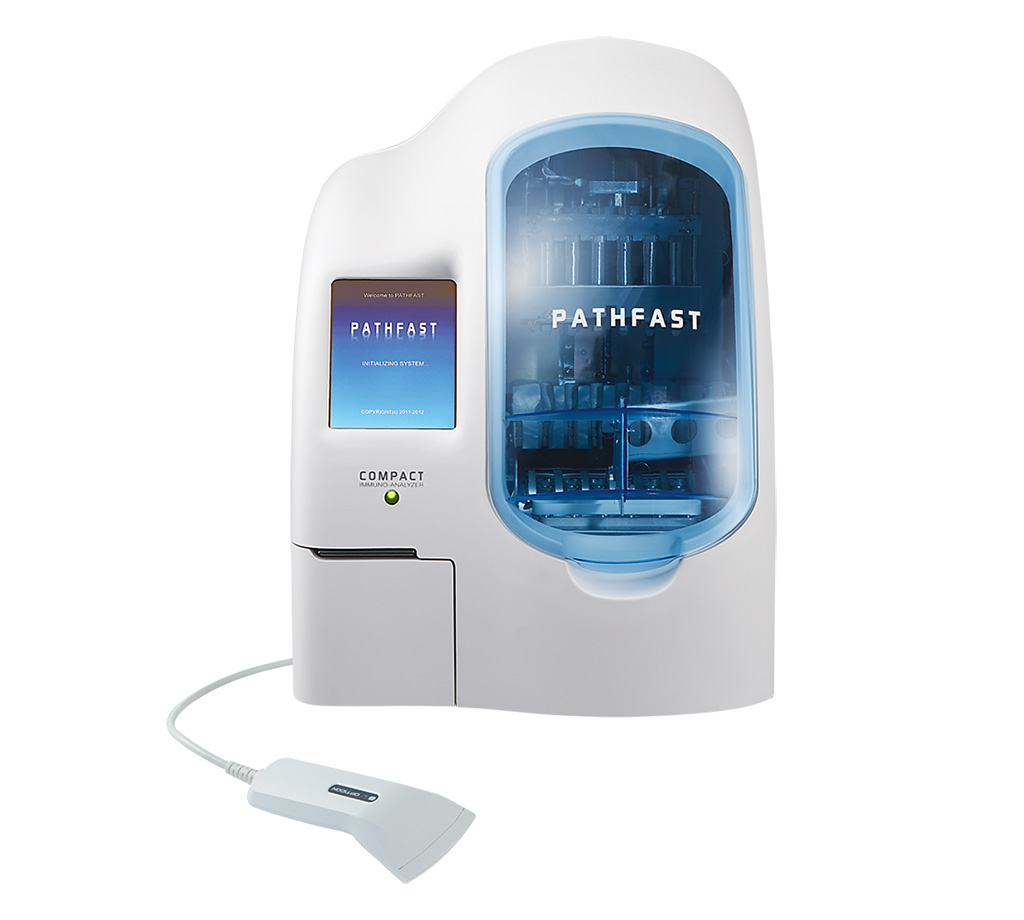Presepsin Concentrations Predicts Commensurate Decline in Kidney Function
By LabMedica International staff writers
Posted on 06 Jan 2020
Chronic kidney disease (CKD) is a worldwide health problem and its prevalence is rising, particularly in the elderly, mainly reflecting the increased life expectancy of the global population. Decrease in nephron number with aging leads to age-related decline in glomerular filtration rate (GFR).Posted on 06 Jan 2020
The risk of developing sepsis increase with age and is higher in patients with CKD. Older patients are particularly susceptible to sepsis because of impaired physical function, comorbidity and hospitalization. The plasma presepsin concentrations of healthy individuals are very slight and have been shown to increase in response to bacterial infections according to disease severity.

Image: The PATHFAST system combines the accuracy of a full-scale laboratory analyzer with the flexibility of a mobile solution (Photo courtesy of LSI Medience Corporation)
Nephrologists at the Nippon Medical School Graduate School of Medicine (Tokyo, Japan) and their colleagues enrolled CKD patients aged ≥65 ye who had visited the nephrology a hospital outpatient department between April 2015 and March 2016. The study also included patients with CKD G5D, that is, stable patients with anuria receiving maintenance hemodialysis (HD), for at least one year at the dialysis unit of the hospital.
Blood samples from each patient were collected by venipuncture at the time of visit and complete blood count and routine biochemical parameters were measured using standard methods. Serum creatinine was measured in serum specimens using automated enzymatic method. Serum cystatin C was measured using a particle-enhanced immunonephelometric assay with the Siemens BN ProSpec nephelometer (Siemens Healthcare Diagnostics, Erlangen Germany). C-reactive protein (CRP) was measured by latex-enhanced immunonephelometric assay with the Siemens BN ProSpec nephelometer. Plasma presepsin concentrations were immediately measured using a Pathfast automated immunoassay analyzer (LSI Medience Corporation, Tokyo, Japan) based on noncompetitive chemiluminescent enzyme immunoassay.
The investigators examined plasma presepsin concentrations of 170 patients (101 men and 69 women and the age of patients ranged from 65 to 97 years, with a median age of 78 (72–85) years. There were 17 patients with CKD G5D (mean HD duration 146 ± 67 months). The mean estimated glomerular filtration rate was 51.8 ± 28.1 mL/min/1.73 m2. Plasma presepsin concentrations in those with CKD G4-G5 (362 pg/mL [273–553]) were significantly higher than in those with CKD G1-G2 (111 pg/mL [91–113]) and CKD G3 (145 pg/mL [124–205]). A high correlation between plasma presepsin concentrations and kidney function was observed.
The authors concluded that increases in plasma presepsin concentrations were exponentially correlated to decline in kidney function in the elderly with CKD and they developed a new prediction equation for plasma presepsin concentrations based on CKD-EPI eGFR Creatinine-Cystatin C equations (eGFRcr-cys). Prediction of plasma presepsin concentrations through commensurate decline in kidney function in the elderly should help in the precise diagnosis of sepsis in clinical practice. The study was published in the January 2020 issue of the journal Clinica Chimica Acta.
Related Links:
Nippon Medical School Graduate School of Medicine
Siemens Healthcare Diagnostics
LSI Medience Corporation













